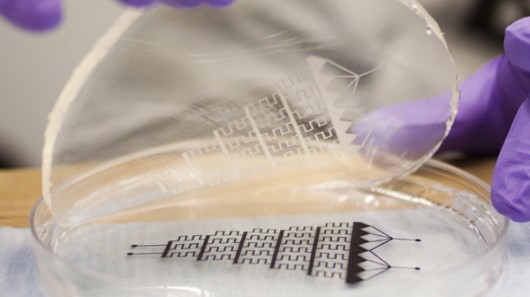Microfluidic technology, in which liquid is made to pass through “microchannels” that are often less than a millimeter in width, has had a profound effect on fields such as physics, chemistry, engineering and biotechnology.
In particular, it has made “lab-on-a-chip” systems possible, in which the chemical contents of tiny amounts of fluid can be analyzed on a small platform. Such devices are typically made in clean rooms, through a process of photolithography and etching. This rather involved production method is reflected in their retail price, which sits around US$500 per device. Now, however, a high school teacher has come up with a way of making microfluidics that involves little else than a photocopier and transparency film.
Joe Childs, who teaches physics at Massachusetts’ Cambridge Rindge and Latin School, collaborates with Harvard University’s School of Engineering and Applied Sciences (SEAS), via the National Science Foundation’s Research Experience for Teachers program. As part of that program, he devised a quick, simple and inexpensive method of creating reusable labs-on-a-chip.









